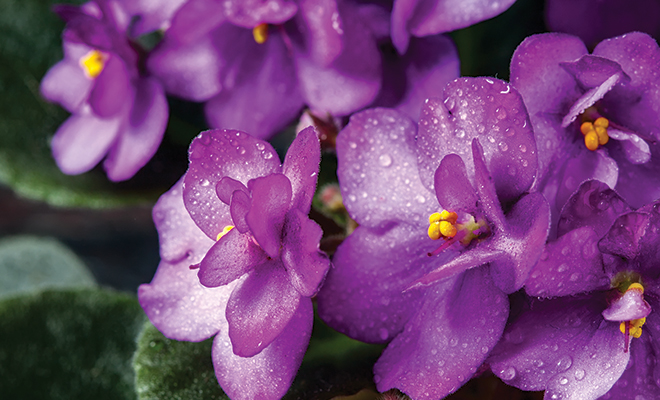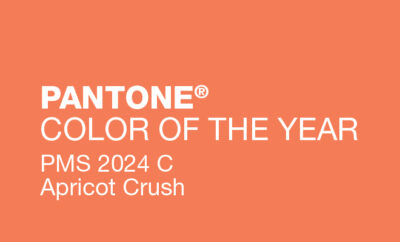
The African Violet: America’s Favorite Houseplant
Soon after their introduction in the early 1920s, African violet fever spread, and these beauties quickly became America’s favorite houseplant. Today, the African Violet Society of America lists over 18,500 named varieties in their First Class database.
African violets come in pink, white, red, blue and all manner of color combinations with borders of gold, white and green. Blossom shapes may be a bell, pansy, star or wasp. They may also be single, double or semi-double. Leaf shapes may be classified as ruffled, compound, girl, holly, spider, quilted, pointed, serrated, spooned, supreme or variegated. Plants sizes vary from miniatures to standards. When you mix up all these combinations, you can easily run into thousands of hybrids or crosses.
The earliest African violets were collected in Africa in 1887. Later, seeds were sent to the Royal Botanical Gardens in Hanover, Germany, by Walter von Saint Paul, hence the genus Saintpaulia. Commercial growing of the African violet began in Germany in 1893; in 1926, African violets were introduced in the United States. In 1946, the first African violet show in the United States was held in Atlanta, Georgia, where interest in organizing the African Violet Society of America was sparked. Today, the AVSA is an international society with members around the world. Some of the most beautiful hybrids today are being cultivated in Russia and the Ukraine.
African violets have few requirements, such as the right amount of light, water and fertilizer.
Light
African violets need adequate light to ensure year-round blooming. The plant does very well in a bright window sill with filtered light. An east window with morning sun is great while a west window with unfiltered sun will probably be too strong and hot for most violets. However, growing the plants using artificial lights and keeping the plants 8 to 10 inches from the tubes is the method used by serious growers today.
Water
African violets can be watered from the top, or they may be watered using wicks that draw up the water from a reservoir. Only room-temperature, drinkable water from the tap should be used. Never use water that has been filtered through a water softener. Serious growers who have the ability swear by rainwater. If watering from the top, remove any excess water that drains out of the pot after 15 or 20 minutes.
Feeding
Either too much or too little fertilizer can cause lack of blooms and even kill the plant. African violets should be fertilized using 1/8 teaspoon water soluble African violet fertilizer per gallon of water for plants grown under lights using constant watering methods.
Atmosphere
African violets grow well in the same household conditions as humans. Fresh air, a temperature of 75 to 80 degrees during the day with a 5- to 10-degree drop at night, and 40 to 50% humidity is ideal. That said, the plants will grow in less than ideal conditions.
Potting
True African violet aficionados use soilless mixtures and small plastic pots with ample drainage holes to grow their plants. There are as many mixtures as there are growers. One basic formula is one-third peat moss (preferably Canadian), one-third perlite and one-third vermiculite. Many growers add other ingredients such as Dolomite lime, charcoal and superphosphate. Experiment until you find your own perfect mixture.
Grooming
A properly groomed African violet is a pleasure to see. Plants should be fresh looking with no dead leaves or blooms. About once a month, gently wash the plant in a stream of tepid water, tilting the pot so water does not accumulate in the crown or in the pot. Allow to dry in a draft-free spot out of direct light. When the plant is thoroughly dry, return it to its place in your home.
Propagation
The easiest way to increase your collection is to grow extra plants to trade with others. Leaf cuttings may be planted in a mixture of potting mix or vermiculite. In as few as six weeks, a cluster of tiny plantlets will push up through the potting mix. As soon as three leaves have formed, the plantlets can be separated and placed in their own pot. Don’t worry about giving African violets plenty of room to grow; on the contrary, they prefer to be root bound. Being root bound encourages more flowering.
Pests and Diseases
They’re the bane of all gardeners, and African violets have their share. Most can be controlled once identified. One inviolate rule is to never add new plants from outside to your collection without first isolating the new plant for up to six weeks.
For more information on African violets, visit the website of the African Violet Society of America. New members are always welcome and enjoy a bi-monthly magazine. The websites of commercial growers also contain plenty of information and frequently offer newsletters to subscribers. ■
Sources: avsa.org and the experience of the writer.







